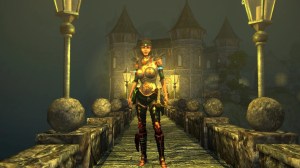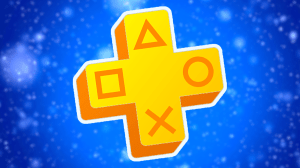Dragon Ball Super is finally bringing its epic “Universal Survival Arc” to the English Dub anime, at the same time that the arc’s main event, the interdimensional “Tournament of Power” is unfolding in the pages of the Dragon Ball Super manga.
Videos by ComicBook.com
The Tournament of Power has quickly become a milestone event in the Dragon Ball saga since playing out in the Japanese and English Sub anime – but as we’ve recently been finding out, it seems Akira Toriyama and his creative team have gone even deeper into fleshing out the Tournament of Power arc for the manga – to much-improved results over the anime.
Here’s why Dragon Ball Super‘s manga version of the Tournament of Power is Better than what we got in the anime version:
More Story

The first thing to note is the level of storytelling in the ToP manga arc vs. the anime. The anime version of the ToP netted some big, consistent headlines for the series – arguably bringing it more fame (and profits) than Dragon Ball has seen in years. It did so by largely functioning like an animated version of the Super Dragon Ball Heroes video game – i.e., providing a series of fan-service fights between the Z-Fighter heroes (Goku, Vegeta, Gohan, Piccolo, Freeza, etc.) and a much wider lineup of intergalactic opponents, which had some clear standouts (Jiren, Toppo, Kale, Caulifla, Cabba, Frost, etc.).
For the mainstream fanbase, it was an episodic showcase of “Fight of the Week” main events (complete with some side bouts of note) – all bolstered by the promise and many teases of Goku’s latest (and highly debated) transformation: Ultra Instinct. As “must see TV” it definitely worked, with Dragon Ball Super’s ToP finale episodes becoming worldwide viewing events.
Like good literature, the Dragon Ball Super manga doesn’t have the demands that come with the TV format to constantly throw big “event” gimmicks at viewers, and so things have been able to unfold and develop at more in-depth pacing. This has been a welcome change, as more of the mythos and backstory of events and prominent characters in the ToP gets conveyed to the reader, opening new doors of understanding about the main lineup of fighters; allowing characters (even Jiren!) to have more distinct personality and three dimensionality. And since comics can believably convey time moving at much slower pace than 20+ minute episodes of a TV show, the actual pacing and unfolding of events in the limited span of this tournament feel a lot more natural in flow.
In short: there’s an actual story to Toriyama and Toyotaro’s version of the ToP – one that is building towards the series future with much clearer vision (more on that later).
Better Character Use

As stated above, the anime ToP was mostly a “fight of the week” showcase event, where the actual opponents were treated as far less important than the Z-Figher team of universe 7. Even among the Dragon Ball heroes, it was pretty lopsided in terms of who got most of the focus (Goku, Vegeta, Freeza), with fighters like Roshi, Gohan, Piccolo or Android 18 getting one or two moments to really shine, before being sidelined.
While investment of animation frames must be carefully calculated for an anime, the Dragon Ball Super manga ToP is able to invest much more time and relevance into the larger ensemble of characters – the Universe 7 team, their various opponents, even the gods and angels spectating the event. The biggest difference of note is how much more personality Jiren has in the manga (pompous Vegeta-style jerk), but fan-favorites like Kale, Caulifla, and Gohan all get much better storylines that have actual arcs to them.
The best example is Master Roshi: the old turtle hermit gets a standout moment that helps connect Goku’s future with Ultra Instinct right back into his Turtle School roots.
Better Fights

Okay, so a lot of fans may read that section heading and have an immediate “WTF?” reaction – but hear this out:
The ToP’s biggest moments in the Dragon Ball Super anime were some of the series’ best, in terms of animation and direction. No contest there. However, as stated before, animation frames have to be carefully calculated in an anime episode – a restriction the Dragon Ball Super manga can circumvent. The manga’s version of the ToP shines through thanks to a combination of awesome art from Toyotaro, and a much better visual conveyance of the tournament arena, combatants, and the spatial layout of the fights, which are often happening simultaneously on several different planes of the battlefield. Some of the main event fights in the manga so far (like Gohan vs. Kefla) have good enough that they don’t feel any less epic than their animated counterparts.
Better Setup for the Future

The storyline, character arcs, and even the various fights that are unfolding in the Dragon Ball Super manga have one clear advantage over the anime: it has much clearer vision, which is setting a much stronger foundation for the next installments of the series.
The manga still has to reach its climatic chapters, but already there are some strong character and narrative developments that can (and should) come into play later. The Saiyan characters are getting particularly good development, with Caulifla and Kale’s respective Saiyan power potentials getting much more weight; Gohan proving that he’s still a major powerhouse in his own right; and Goku’s ability to access Ultra Instinct getting much more explanation, which will help make it a bigger factor in the future – and for more characters than just Goku.
Already it seems like more elements from the manga source will be mixed into the upcoming Dragon Ball Super: Broly movie. That film will then be the springboard to what the next canon anime series are about, so all of these differences in the manga ToP could legitimately affect the anime, in the very near future.
How do you think the Dragon Ball Super manga ToP compares to the anime? Let us know in the comments!
Dragon Ball Super: Broly will hit Japanese theaters in December, and is expected to arrive in the U.S. around mid-January 2019. Dragon Ball Super is currently airing its English dub on Adult Swim during the Toonami programming block Saturday evenings at 9:30 p.m. ET. It is also available to stream on Funimation and Amazon Video. The Japanese language release of the series is complete and available to stream on Funimation, VRV and Crunchyroll.








